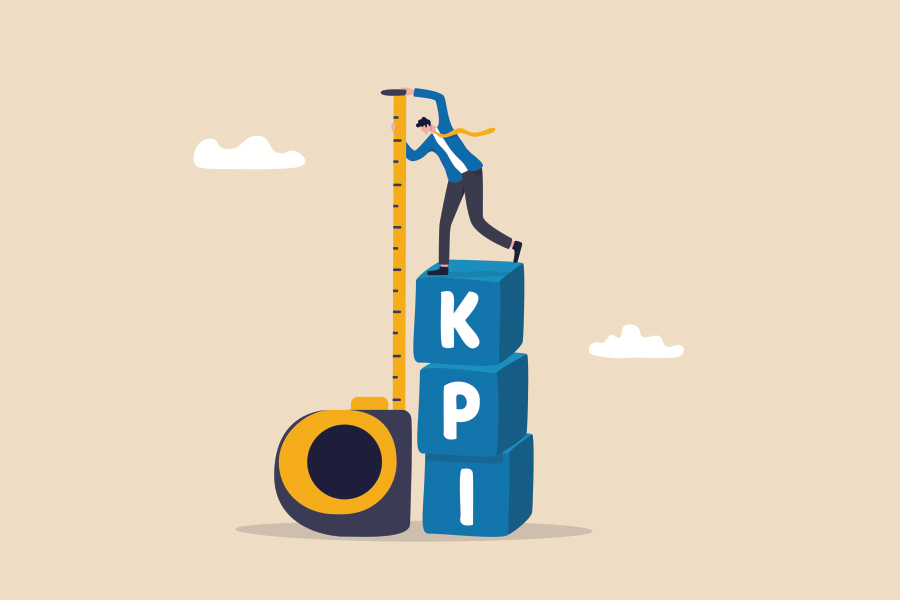During the pandemic, the use of business aviation really took off as corporations recognized its advantages as a safe and more reliable transportation alternative. In fact, numbers in 2023 were approximately 10 percent higher than they were pre-pandemic in 2019. However, one of the pushbacks for business aviation has always been the question of its impact on the environment. After all, sustainability is a big deal for corporate travel, especially lately.
Momentum towards sustainability in the aviation industry is growing, but significant progress must still be made. Clive Chalmers, trading director and vice president charter for Air Partner, notes that to reach viable solutions, collaboration will be key, as airlines, airports, aerospace manufacturers and air navigation service providers need to work collectively to make true headway in the right direction.
“However, the industry cannot do this alone,” he warns. “Government support will be paramount to the success of green innovation whether that be through funding, new policies or investment initiatives. There is no doubt however that sustainability is inextricably linked to the future success of the sector and as such change is both necessary and urgent.”
Over the last year, 5.5 million business aircraft took to the skies. The average private jet burns nearly 5,000 gallons of fuel per hour, equivalent to about 400 passenger cars. Mike Winston, founder and executive chairman of Jet.AI, notes that private aircraft are responsible for 2 percent of aviation emissions which are 2 percent of total emissions, so private aviation is responsible for just 0.4 percent of global emissions.
“By way of example, American Airlines alone will generate about 50 million tons of CO2 per year whereas all 29,000 private jets in the world will total roughly 12.5 million tons,” he says. “However, on a per passenger basis, private aviation looks wasteful by comparison, so the industry needs to get ahead of the problem with sustainable fuel and high-quality carbon removal offset.”
Aviation has always been on the cutting edge of innovation and industry insiders expect technology will play a critical role in helping the sector meet emissions goals. This includes the development of sustainable aviation fuels, more fuel-efficient aircraft, and redesigning the structure and function of airspace.
“It is also entirely feasible that the biggest impact in helping to achieve net-zero targets will come through the development of electric aircraft as the industry moves away from fossil fuels altogether,” Chalmers says. “The most significant issue to overcome concerns battery power, but the technology is moving quickly, and we project that electric aircraft will have a real role to play for shorter flights within the next few years. What is clear however is that our sector must evolve and at pace as we don’t have the luxury of time.”
French industrial conglomerate Daher builds two business/general aviation aircraft: The six-seat TBM series are fast and efficient turboprop aircraft, used by business owners/operators and individuals; and the 10-seat turboprop-powered Kodiak, which is a multi-role airplane utilized for everything from business and personal transportation to humanitarian, ecological and public missions.
The company is persuaded that improved sustainability is vital to the future of aviation, and it has made the decarbonization of this sector a major focus. Nicolas Chabbert, senior vice president of Daher’s aircraft division, notes the company’s TBM distributor in the UK and Ireland, FlyingSmart, is using sustainable aviation fuel (SAF) at its Biggin Hill Airport base, and Avex, the TBM distributor for the southwestern United States, is selling SAF at its Camarillo, CA. fixed-base operation. Chabbert says he expects others to follow with decarbonization efforts
The company has launched three innovation centers: Shap’in, for the design of lighter and recyclable aeronautical structures; Log’in, to reduce the environmental footprint of logistics; and Fly’in, dedicated to the hybrid and low-carbon aircraft of the future.
“The idea is to work in close relationships with partners, customers and startups in designing solutions that will lead to a net zero impact for the aviation sector by 2050, with a first significant step from 2035 in the framework of the Paris Agreement on global climate change,” says Jeffrey Lenorovitz, vice president of communications for Daher.
Making an Effort
Alvadi Serpa Jr., director, market and product intelligence for Embraer Executive Jets, notes the company’s commitment to sustainability extends across various initiatives, employing cross business-unit knowledge to lower emissions, noise levels, and fuel consumption, steering aviation towards a more sustainable future.
“Recent efforts to reduce emissions in scopes 1 and 2 (direct and indirect emissions regarding operations) include a power purchase agreement for 100 percent renewable electricity in Brazil and in Portugal by 2024, along with the adoption of solar heating, biomethane gas and photovoltaic panels in various facilities,” Serpa says.
Still, SAF is the central focus for Embraer in the short and medium term, aligning with the aviation industry’s priority to address CO2 emission reduction targets over the next 30 years. In 2023 alone, the company employed SAF in selected demonstration flights, airshows and customer demos.
“The dedication extends to utilizing book and claim for selected flights when SAF is not readily available, showcasing Embraer’s proactive approach towards sustainable aviation practices,” Serpa says, adding the company aims to use 100 percent renewable energy by 2030. “Addressing sustainability challenges in aviation is a complex task, and Embraer recognizes there is no silver bullet for the problem. Achieving sustainability takes time, substantial investment and collaborative efforts. The development of technologies, being capital-intensive, necessitates a patient and concerted approach, considering long-term policies and market conditions.”
Dan Hubbard, senior vice president of communications for the National Business Aviation Association, explains that when it comes to innovation leading toward carbon reduction, the business aviation sector has a good story to tell thanks to a combination of efforts on the ground and in the air.
“We have been able to slash carbon emissions in aviation by approximately 40 percent in just four decades,” he says. “It’s pretty clear to me, that despite an impressive record, the business aviation sector has continued to keep carbon reduction in sharp focus. Groundbreaking technologies have dramatically moved the needle.”
In that respect, Hubbard points to winglets, which started out on business aircraft and now help almost all planes in the sky operate more efficiently, reducing fuel consumption. Another innovation has been satellite-based navigation systems, which allow for more efficient routing, and more efficient takeoff and landing, cutting fuel consumption.
“Even the engines themselves on business airplanes, many of which are turbine engines, are vastly more fuel efficient today than they were when first introduced – by some estimates as much as 70 percent more efficient,” he says.
“That’s because over and over again, the manufacturers look at all the component parts and try to determine what can be done to wring more efficiency out of the engine itself.” Today, models of business aircraft are 35-40 percent more efficient than their predecessor model, he adds.
Winston notes that sustainability is particularly important in Europe, but has become more significant in the US in recent years, and companies have been getting more resources to do something to improve sustainable efforts.
Jet.AI, for instance, built the first API carbon removal platform, DynoFlight, which is tailor-made to aviation, and will soon launch a second platform, Reroute, to help refill and reroute empty planes to conserve aggregate fuel consumption.
“If you care about future generations, their long run will be rather short unless we gather our wits and accept what science tells us about climate change,” Winston says. “These efforts are important because a bigger pile of money on a hotter and hotter burning rock is no use at all – climate change affects everyone.”
More Milestones Ahead
Global air charter specialists Chapman Freeborn has signed a deal with business aviation sustainability solutions provider 4Air to use SAF and offsets to achieve carbon neutrality. Through the deal, Chapman Freeborn’s US clients will be able to opt into the program to have a monthly report of their flights provided to 4AIR. The emissions are calculated, and participating clients receive an annual emissions report from 4AIR that details the emission certificates that have been purchased and retired on their behalf which they can then use as they wish.
Lee Fletcher, Chapman Freeborn’s environmental and sustainability manager, notes that although the company, which is part of Avia Solutions Group, does not directly manage or administer the voluntary offsetting program, its collaboration with 4AIR will provide sustainability program management and consulting to its clients.
“The aviation sector has a significant challenging task in reducing its impacts by 2050,” Fletcher says, “The Chapman Freeborn Group see this partnership with 4AIR as the first small, but important, step in taking responsibility in reducing both our impacts and those of our valued clients.”
Aerospace giant Boeing understands the journey to net zero is dependent on the overall energy transition, according to Adam Mertz, head of North American sales and Boeing Business Jets communications. Whether using SAF, hydrogen or electricity, the energy and emissions associated with the production, distribution and storage of fuels must be minimized to achieve the most sustainable outcome.
For that reason, the company created the Boeing Cascade Climate Impact Model, a data modeling tool that identifies the effects of a range of sustainability solutions to reduce aviation’s carbon emissions and available on the company’s Sustainable Aerospace Together hub.
Cascade examines the full life cycle of alternate energy sources for aviation, from production through distribution and use, and quantifies the ability to cut aviation’s carbon emissions, Mertz says. Data modeling also measures airplane fleet renewal, operational efficiency, renewable energy sources, future aircraft and market-based measures as pathways to decarbonization.
Two years ago, Air Partner created the role of Group ESG Manager and launched its first ESG strategy, which carefully considered the key factors intrinsically important to its current and future operations.
“One of our most significant programs within the ESG strategy has been carbon offsetting, allowing our customers to mitigate emissions released through flying by investing in carbon reduction projects,” Chalmers says. “One way to increase the take up of carbon offsetting is through adopting an ‘opt-out’ rather than ‘opt-in’ model in which the offsetting amount is automatically added to the flight costs.”
The opt-out model is recommended by the UK government’s Department of Transport and has helped Air Flight increase the quantities of carbon being offset on its flights by 65 percent over the past year, enabling customers to support with the funding of several community projects in developing countries.
“Our philosophy is simple: Take responsibility,” Chalmers says. “We fully recognize that aviation has a direct impact on climate change, and as part of the industry, we have a role to play in ensuring that we do all that we can to find ways to reduce these harms. This is important for the planet, our people, our customers and crucially our future, so strategically we consider it to have very high priority.”
One element of Daher’s sustainability-related innovation is developing a hybrid-electric business/general aviation aircraft. “The EcoPulse demonstrator aircraft – being evaluated in a cooperative program with Airbus and Safran – is serving as a testbed of technologies, power management and design for such a future hybrid-electric business/general aviation aircraft,” Lenorovitz says.
“During the past 10-plus years, Daher has taken major environmental issues into account for its R&D,” Lenorovitz says. “The COVID-19 crisis accelerated the aerospace sector’s transformation as well as the collaborative research of innovative solutions, even breakthroughs. Our firm belief is that tomorrow, aircraft will need to be greener, or they will no longer exist.”
Attracting the Business Traveler
Ultimately, customer expectations have been a key driver of change in the industry. Awareness around climate change has grown substantially, and individuals and businesses are taking more ownership of how their actions impact the world.
Hubbard believes today’s business travelers are deeply invested in working with companies that have a sustainability mindset. That being said, often they are looking at what’s being done to improve emission numbers and helping the environment, and that leads to the choices they make. “They are looking for efficiency and productivity gains. When you are using a business airplane, you can often reach three towns on one airplane, in one day, if you handle things efficiently enough. With airlines, that can sometimes take three days,” he cautions.
For business aviation, the challenge is to keep business travelers coming back by investing in a constantly expanding commitment to sustainability. “As we look to the future, customer expectations will continue to evolve and the industry must seek feedback, listen and act accordingly,” Chalmers says. “As more businesses develop clear ESG ambitions, there will be an increasing expectation that travel providers have plans in place to offer sustainable options.”










